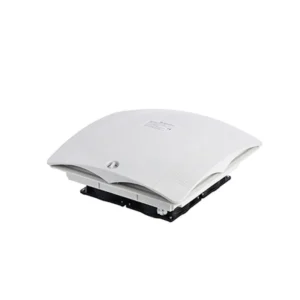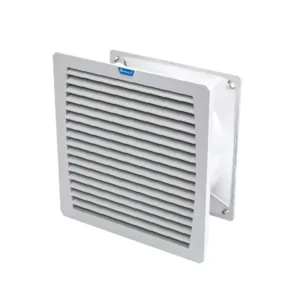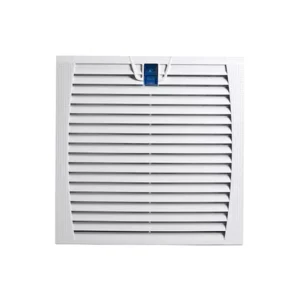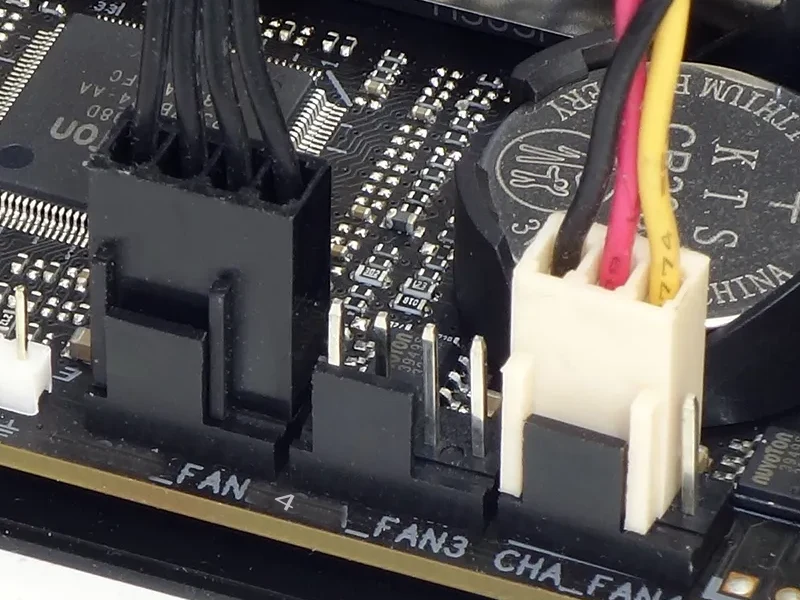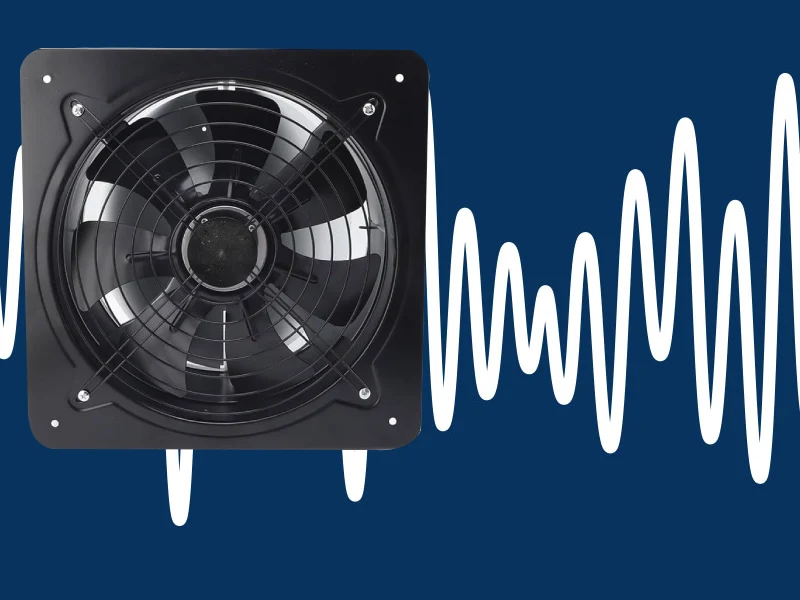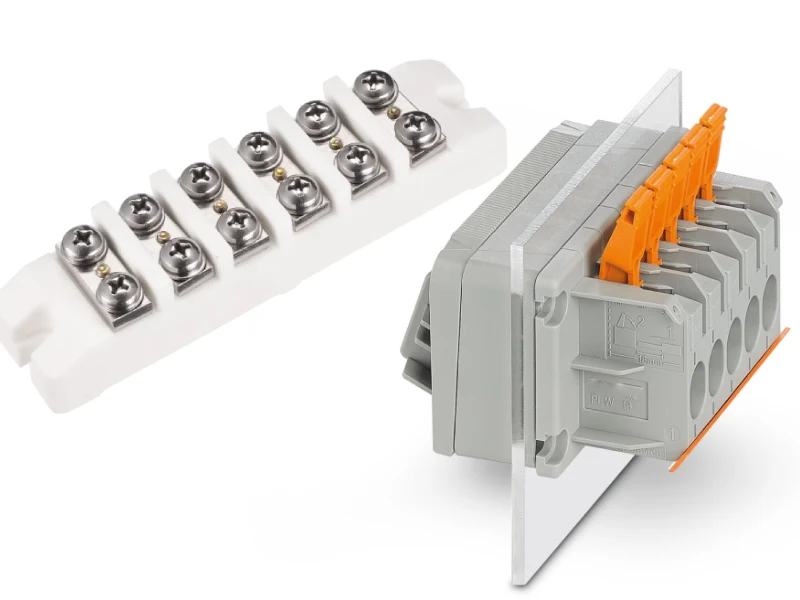If you’ve ever wondered about the difference between a ventilation fan and an exhaust fan, you’re not alone. In industrial spaces like electrical cabinets, knowing the distinction really matters.
A ventilation fan brings fresh air in and keeps equipment cool, while an exhaust fan pushes hot, contaminated air out. With the global market for these fans growing rapidly—ventilation fans alone are set to reach over USD 3 billion in 2025—the right choice helps you save energy and protect your equipment. When you consider the ventilation fan vs exhaust fan debate, trust Linkwell for reliable solutions.
Ventilation Fan vs Exhaust Fan Key Takeaways
- Ventilation fans bring fresh air into cabinets to cool equipment and improve air quality, while exhaust fans push hot, stale air out to remove moisture and contaminants.
- Choosing the right fan depends on your needs: use ventilation fans to keep air fresh and cool, and exhaust fans to remove heat, fumes, or humidity.
- Ventilation fans are easier and cheaper to install since they need no ducts, but exhaust fans require ducts and more complex setup to expel air safely.
- Regular maintenance like cleaning filters and checking airflow keeps fans working well and protects your equipment from damage.
- Linkwell’s fan filter units offer energy-efficient, reliable solutions with smart features that save costs and extend equipment life.
Recommended products
Ventilation Fan Overview

What Is a Ventilation Fan
A ventilation fan is a device that moves air in and out of enclosed spaces to maintain safe and comfortable conditions. In industrial settings, you often find ventilation fans inside electrical cabinets, control panels, and telecom enclosures. These fans help you manage heat, humidity, and dust, which can damage sensitive equipment. The main function of a ventilation fan is to bring in clean air and push out warm or stale air, supporting effective ventilation and better indoor air quality.
When you choose a ventilation fan, you need to think about several factors:
- Heat load and airflow needs for your equipment
- Space constraints that affect fan size and type
- Power supply compatibility for voltage and current
- Environmental conditions like temperature, humidity, and dust
- Compliance with safety and noise regulations
- Performance metrics such as airflow, static pressure, and efficiency
Different types of ventilation fans exist for various needs. Axial fans move large volumes of air at low pressure, while centrifugal fans handle high-pressure situations. Mixed flow fans combine both features for efficient ventilation and lower noise.
How Ventilation Fans Work
Ventilation fans work by drawing air from outside and pushing it into your cabinet or panel. This process helps you control temperature and humidity, which protects your equipment from overheating or moisture damage. The fan’s motor powers blades that spin and move air through a filter, trapping dust and debris. This keeps the air inside your enclosure clean and supports good indoor air quality.
Linkwell’s fan filter unit is a great example of this technology. It uses a high-performance fan and replaceable filter to deliver effective ventilation. The compact design fits tight spaces, and the unit operates quietly, making it ideal for industrial automation and electrical panels.
Common Uses
You will see ventilation fans in many industrial applications. Here are some common uses:
- Cooling electrical cabinets and control panels
- Protecting sensitive electronics in telecom enclosures
- Improving ventilation in battery storage systems
- Maintaining indoor air quality in automation and energy storage equipment
The advantages of ventilation fans include:
- Extending the lifespan of your equipment by preventing overheating
- Reducing dust and moisture buildup for better air quality
- Supporting effective ventilation and improving indoor air quality
If you want to keep your equipment running smoothly, ventilation fans are essential. Linkwell’s fan filter units offer reliable solutions for industrial needs, helping you achieve clean air and optimal performance.
Exhaust Fan Overview
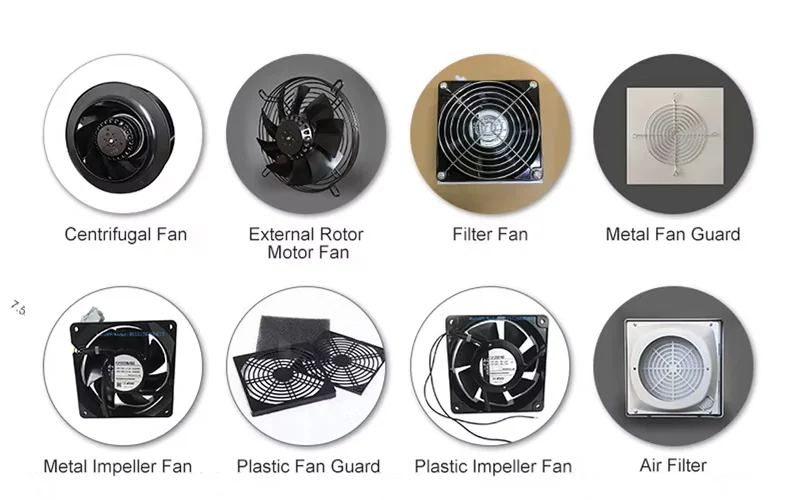
What Is an Exhaust Fan
You might wonder what sets an exhaust fan apart in industrial settings. An exhaust fan is a device that pulls stale air out of enclosed spaces, such as electrical cabinets or control panels, and expels it outside. This process helps you maintain a safe and comfortable environment for your equipment and workers. The main function of an exhaust fan is stale air removal, which means it gets rid of hot, humid, or contaminated air that can damage sensitive electronics or reduce productivity.
If you look at the advantages of exhaust fans, you’ll see they:
- Remove odors, fumes, and pollutants right at the source.
- Prevent moisture buildup that can lead to mold or corrosion.
- Create a pressure difference, pulling out stale air and letting fresh air enter.
- Focus airflow on problem areas, not just mixing air around.
Linkwell stands out in the industrial exhaust fan market. With over 15 years of experience, Linkwell supplies high-efficiency exhaust fans for electrical cabinets and industrial panels. Their products carry top certifications and are trusted by Fortune 500 companies for reliable stale air removal.
How Exhaust Fans Work
Exhaust fans use a motor to spin blades or an impeller at high speed. This action creates a vacuum that draws air from inside your cabinet or enclosure and pushes it outside through vents or ducts. The negative pressure inside the space pulls in fresh air, keeping the environment balanced. You’ll find that exhaust fans often use ducting to direct contaminated air away from sensitive equipment, which is crucial for industrial safety.
Here’s how the mechanism works:
- Motor-driven blades rotate to generate airflow.
- Stale air moves toward the fan and gets expelled outside.
- The pressure difference draws in clean air from outside.
- Continuous operation ensures ongoing stale air removal and temperature control.
Linkwell’s exhaust fans are designed for easy installation and minimal maintenance. Their IP54-rated models handle tough industrial conditions, making them ideal for electrical cabinets and automation panels.
Typical Applications
You’ll see exhaust fans used in many industrial environments. The main applications of exhaust fans include:
- Electrical cabinets and control panels, where heat and humidity threaten equipment.
- Industrial automation systems, which need constant air exchange for safe operation.
- Battery storage enclosures, where removing fumes and moisture is critical.
- Energy storage and power generation spaces, where air quality affects reliability.
The advantages of exhaust fans in these settings are clear. They protect your equipment, improve air quality, and help you meet safety standards. Linkwell’s exhaust fans offer energy-efficient solutions, strong airflow, and proven durability for industrial use.
Tip: Optimize exhaust fan placement near the top of your cabinet or enclosure. Warm, humid air rises, so this strategy boosts stale air removal and keeps your equipment cool.
| Attribute | Details |
|---|---|
| Company Name | Linkwell Electric (Shanghai) Co., Ltd. |
| Experience | 15 years manufacturing |
| Product | High efficiency thermoplastic ABS radial fans |
| Product Rating | 5.0 out of 5.0 supplier rating |
| Certification/Rating | IP54 rating |
| Customer Base | Cooperation with Fortune 500 companies |
Ventilation Fan vs Exhaust Fan
Airflow Direction
When you compare a ventilation fan vs exhaust fan, the airflow direction stands out as the biggest difference. A ventilation fan pulls fresh air into your cabinet or panel, circulating it to keep the environment cool and safe. This multi-directional airflow helps you maintain improved air quality and supports clean air inside your enclosure. You don’t need external ducting for most ventilation fans, which makes installation easier.
On the other hand, an exhaust fan pushes air out of your space. It creates a unidirectional flow, pulling hot, humid, or contaminated air through the fan and expelling it outside. You usually need ducts for exhaust fans to direct the air away from sensitive equipment. This setup is perfect for removing fumes, moisture, and airborne particles that threaten your electronics.
- Ventilation fans circulate air within the cabinet, promoting air quality improvement.
- Exhaust fans remove stale air, focusing on extraction and expulsion.
- Ventilation fans work as air introducers and circulators.
- Exhaust fans act as air removers and extractors.
If you want to improve breathable air quality in your electrical cabinets, you need to understand how airflow direction affects your choice between a ventilation fan vs exhaust fan.
Purpose and Benefits
Let’s talk about why you might choose one over the other. The purpose of a ventilation fan is to introduce fresh air and maintain continuous airflow. This helps you reduce heat, balance humidity, and support indoor air quality. You’ll see ventilation fans used for cooling control panels, protecting sensitive electronics, and ensuring air quality improvement in automation systems.
Exhaust fans serve a different purpose. They remove air from your cabinet, expelling moisture, odors, and contaminants. This prevents mold, corrosion, and equipment damage. Exhaust fans are essential in industrial settings with high moisture or fumes, such as battery storage or manufacturing areas. They help you control temperature, reduce fire hazards, and meet safety standards.
Here’s a quick comparison:
- Ventilation fans:
- Introduce fresh air and maintain continuous airflow.
- Reduce indoor pollutant concentration.
- Support worker health and comfort.
- Operate quietly and efficiently.
- Help maintain comfortable humidity and oxygen levels.
- Exhaust fans:
- Remove moisture, odors, fumes, and airborne contaminants.
- Prevent health risks and equipment damage.
- Lower cooling costs by reducing HVAC load.
- Operate intermittently and may produce more noise.
- Protect equipment from overheating and extend lifespan.
Linkwell’s fan filter units offer a great example of how ventilation fans can outperform traditional exhaust fans in some industrial applications. In a biotech lab, switching to Linkwell fan filter units saved 28,000 kWh annually and reduced HVAC load. A Texas data center reported zero downtime and stable temperatures after installing Linkwell fans. Filters last up to 6,000 hours, and modular components cut installation time by half. You get reliable performance, reduced maintenance, and significant cost savings.
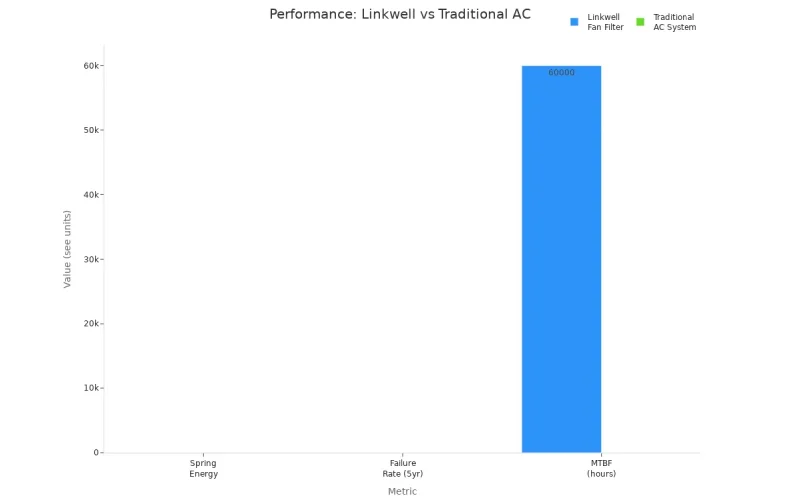
During peak summer, combining continuous fan operation with intermittent AC use can cut compressor runtime by 50%. This strategy keeps your equipment safe and your energy bills low.
Installation Differences
You’ll notice some clear differences when you install a ventilation fan vs exhaust fan in your industrial cabinets. Ventilation fans usually have a simpler setup. You mount the fan filter unit directly onto your cabinet wall, and you don’t need extra ducting. This keeps installation costs low and makes maintenance easy. You can swap out filters quickly, and the compact design fits tight spaces.
Exhaust fans require more planning. You need ducts to expel air outside, which increases installation complexity and cost. Each exhaust fan must have backdraft dampers to prevent air from flowing back into your cabinet. You often need to balance airflow and follow strict sound ratings, especially in industrial environments.
Here’s a table to help you compare:
| Installation Aspect | Ventilation Fans (2025) | Exhaust Fans (2025) |
|---|---|---|
| Ducting Requirements | No external ducting needed; simple wall mounting. | Requires ducts to expel air; must use backdraft dampers. |
| Sound Rating | Quiet operation, usually rated at 1 sone max. | May be louder, especially in high-powered setups; up to 3 sones for demand-controlled fans. |
| Fan Efficacy and Airflow Rating | Certified airflow ratings; easy to size for cabinets. | Same airflow requirements; must meet minimum ratings for industrial safety. |
| Operational Controls | Often runs continuously; may have ON/OFF override or boost functions. | Can operate intermittently or on demand; must meet minimum ventilation schedules. |
| Installation Location and Use | Mounted on cabinet walls or doors; ideal for electrical panels and control cabinets. | Typically ceiling or wall-mounted with ducts; used in areas needing pollutant removal. |
| Balancing Requirements | Not required for single units; easy to maintain airflow. | Must prevent cross-contamination; balancing not typical for isolated units. |
Ventilation fans generally cost less to install than exhaust fans. You don’t need ductwork, and the process is straightforward. Exhaust fans, built for heavy-duty pollutant removal, come with higher installation costs due to their complex setup.
If you’re deciding between exhaust fan vs ventilation fan for your industrial cabinets, consider your airflow needs, installation budget, and maintenance preferences. Linkwell’s fan filter units give you a reliable, energy-efficient solution for improved air quality and indoor air quality in electrical enclosures.
Tip: For maximum air quality improvement, choose a fan filter unit with easy-to-replace filters and IP-rated protection. This keeps your equipment safe and your maintenance simple.
Choosing the Right Fan
Assessing Your Needs
Choosing between a ventilation fan and an exhaust fan for your industrial cabinet can feel tricky. You want to keep your equipment safe, cool, and running smoothly. Start by thinking about the purpose. If you need to bring fresh air into your cabinet and keep temperatures steady, a ventilation fan is your best bet. If your main goal is to remove hot, humid, or contaminated air, you should go with an exhaust fan.
Here’s how to determine the type of fan for your space:
- Figure out the size of your cabinet or enclosure. Larger spaces need higher airflow (CFM).
- Check if you need to control temperature, humidity, or remove fumes.
- Think about where you’ll install the fan—wall, door, or roof.
- Consider noise levels. Fans rated at 1.5 sones or below are quiet enough for most industrial settings.
- Look at ductwork. Exhaust fans often need ducts to expel air, while ventilation fans usually do not.
- Make sure the fan material can handle your environment, especially if you have dust, moisture, or chemicals.
| Room Size (sq ft) | Fan Diameter (inches) | Recommended CFM | Typical Application |
|---|---|---|---|
| Under 50 | Under 29 | Under 1,000 | Small cabinets, panels |
| 50–75 | 29–36 | 1,000–2,000 | Medium control cabinets |
| 75–175 | 36–48 | Up to 3,800 | Large electrical enclosures |
Tip: Always match the fan’s CFM to your cabinet size for the best results.
Linkwell Fan Filter Unit Features
When you want a reliable solution, Linkwell’s fan filter units stand out. These units use aerospace-grade ABS+PC material for military-grade protection. You get UL94-V0 flame-retardant certification and UV resistance, so your fan lasts longer outdoors. The intelligent filtration system can reach up to 95% efficiency, and you can swap filters in under 30 seconds—no tools needed.
Linkwell fan filter units also feature:
- Real-time filter status monitoring and smart IoT connectivity.
- Patented airflow duct design that reduces airflow loss and improves heat dissipation by 15%.
- Low noise operation, usually below 60 decibels.
- Modular installation that fits over 90% of mainstream fan models.
- EMI shielding for sensitive electronics.
- Proven results: 40% fewer equipment failures, 60% lower maintenance costs, and 50% longer equipment life.
You can trust Linkwell for industrial automation, communication, and energy storage applications.
Practical Tips
To keep your ventilation fan or exhaust fan working at its best, follow these steps:
- Clean the fan grille and blades every 6–12 months.
- Replace or clean filters as recommended by the manufacturer.
- Check for blockages in ducts and vents.
- Listen for unusual noises that might signal a problem.
- Test airflow with a simple tissue or paper test.
- Reset smart settings after deep cleaning.
- Schedule professional inspections if you notice reduced performance.
Note: Regular maintenance prevents costly downtime and keeps your equipment safe.
Avoid common mistakes like thinking more airflow always means better results. Focus on strategic airflow and regular maintenance. If you’re unsure how to determine the type of fan for your cabinet, consult with Linkwell’s technical team for expert advice.
You now know the main differences between ventilation fans and exhaust fans for industrial cabinets. Here’s a quick comparison:
| Feature | Ventilation Fans | Exhaust Fans |
|---|---|---|
| Airflow Direction | Brings fresh air inside | Removes stale air outside |
| Operation | Continuous | Intermittent |
| Main Benefit | Cools and protects gear | Expels heat and humidity |
Choosing the right fan saves energy and keeps your equipment safe. Many industry leaders trust Linkwell’s fan filter units for reliable, efficient ventilation in tough environments. Give your electrical cabinets the protection they deserve! 🚀
FAQ
What is the main difference between a ventilation fan and an exhaust fan?
You use a ventilation fan to bring fresh air into your electrical cabinet. An exhaust fan pushes hot or contaminated air out. Both help protect your equipment, but they move air in opposite directions.
How often should I replace the filter in a fan filter unit?
You should check the filter every 3–6 months. If your cabinet sits in a dusty area, change it more often. Clean filters keep airflow strong and your equipment safe.
Can I use a ventilation fan and an exhaust fan together in my cabinet?
Yes, you can! Using both fans creates a balanced airflow. Fresh air comes in, and stale air goes out. This setup works well for large or high-heat industrial cabinets.
What certifications should I look for in industrial fan filter units?
Look for CE, RoHS, and IP ratings. These show your fan filter unit meets safety and quality standards. Linkwell’s units carry these certifications for reliable performance.
Why should I choose Linkwell fan filter units for my industrial cabinets?
Linkwell fan filter units offer easy installation, strong airflow, and smart filter monitoring. You get less downtime and longer equipment life. Many top brands trust Linkwell for their industrial ventilation needs.
Conclusion
In industrial settings, choosing the right Ventilation Fan vs Exhaust Fan can greatly impact equipment lifespan and performance. Ventilation fans bring in fresh air to cool and improve air quality, while exhaust fans expel hot, humid, or contaminated air to prevent damage.
The right choice saves energy, protects your systems, and reduces downtime. Linkwell offers high-efficiency, customized solutions to keep your electrical cabinets running safely and reliably.

